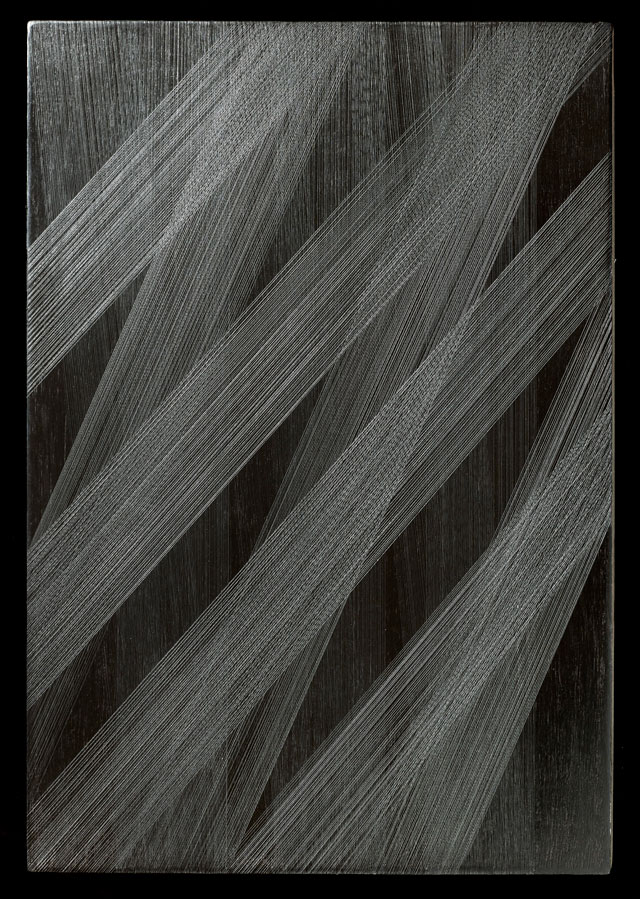

[video1]
Mary Griffiths (b1965, the Wirral) has long been making drawings of (frequently derelict) industrial sites. A year and a half ago, she was introduced to Astley Green Colliery, a former coalmine in Lancashire, which was closed in 1970 and knocked down but for its winding house and headgear – rare examples of 1908 working-class engineering. Spending time at the site, walking around the surrounding geography, reclaimed by nature with trees, grass and mosses, and talking to the volunteers (the colliery is now a museum), Griffiths filled myriad A6 sketchpads with figurative drawings, focusing on aspects that intrigued her, from details of the machinery to a visiting colony of pigeons.
[image4]
From these drawings, she then extrapolated her larger abstract works, made on plywood, with layers of acrylic gesso, and even more layers of graphite, pushed into the board and burnished, before being cut into with an etching needle. Using thousands of straight lines, placed at minutely different angles, she creates an oscillating effect reminiscent of the surface geography of the region. One work, Wild Honey, for example, represents the seams of the coalmine, the waterways and the main roads. Griffiths sees her work as “an identification of the remarkable work that was done in industrial areas” across the country, and it is important to her to capture something of the “gravity and splendour” of the working-class engineering.
[image6]
Protest and Remembrance
Miriam de Búrca | Joy Gerrard | Mary Griffiths | Barbara Walker
Alan Cristea Gallery, London
28 February – 30 March 2019
Interview by ANNA McNAY
Filmed by MARTIN KENNEDY
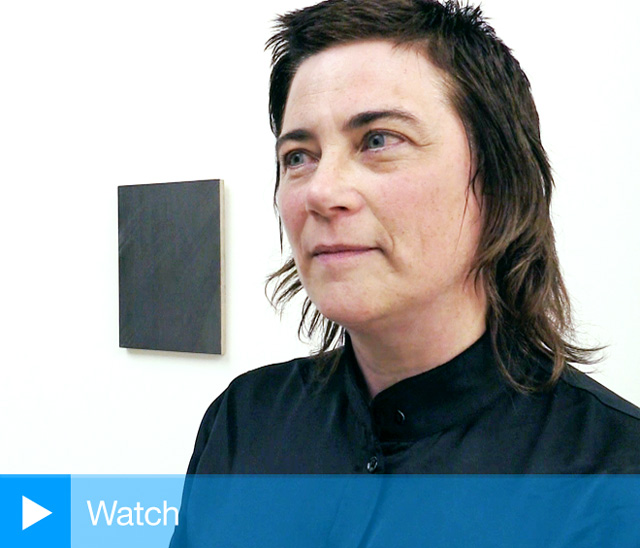
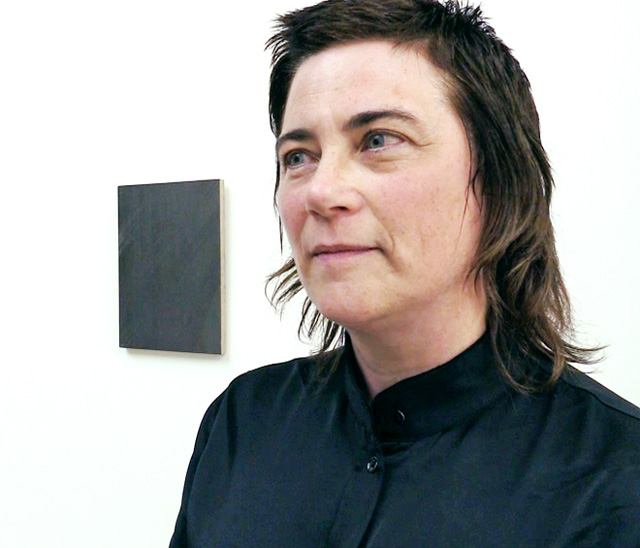
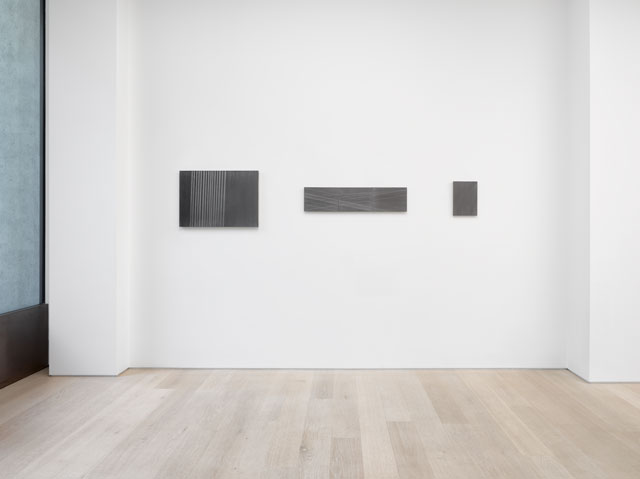
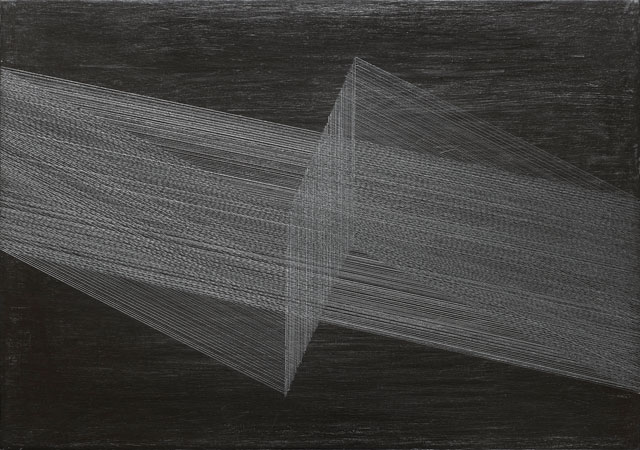
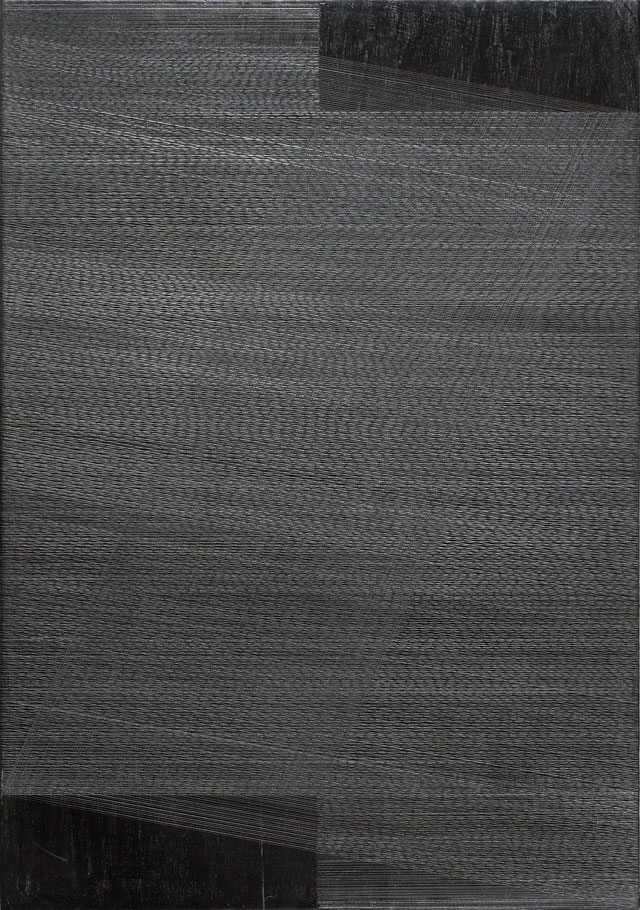
.jpg)
